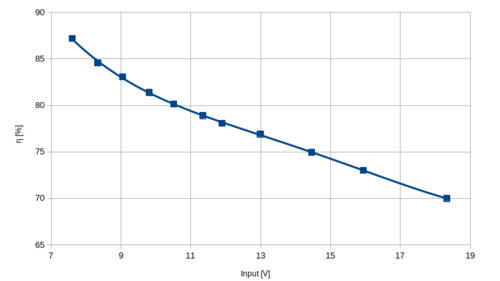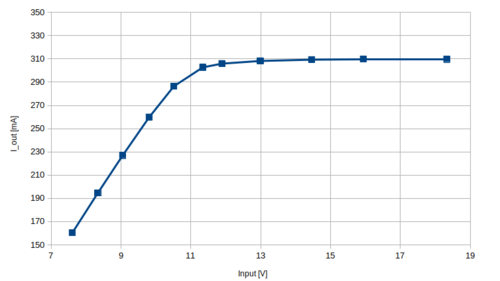
Schematic diagram (click for full resolution)
This is a two-transistor, simple, self-oscillating buck converter usable for powering a few series-connected 1 W (around 300 to 350 mA) LEDs. The output is current limited. There is no voltage feedback and the current is controlled by limiting the peak inductor current.
Principle of operation: Inductors L1, L2 are wound on the same core (an iron-powder core was used here), their inductance is around 100 µH. A small current flows through the base of the power PNP transistor Q2 (BD140) through L2, and resistors R3, R2 to ground. R3 is bypassed by capacitor C2 for higher frequency signals. The small base current causes more current to flow through the collector and winding L1. Then, positive feedback from the feedback winding (L2) fully turns the transistor on. The current starts increasing, the inductor accumulates energy. As soon as the voltage across R1 reaches around 600 mV (with 1 Ω this corresponds to 600 mA, the collector current is close to the emitter current), Q1 starts to turn off Q2, which then gets fully turned off by feedback from L2. The voltage on both windings revereses, D2 conducts instead of Q2, energy from the inductor slowly drops to zero. Voltages on windings start to return to zero. The cycle repeats. D1 prevents the voltage across the B-E junction of Q2 from reaching a too high value. Both diodes are Schottky diodes.
This buck converter runs approximately on the boundary of continuous and discontinuous mode. The current waveform through L1 is approximately triangular, the average output current is a half of the peak current - thus the output current is around 300 mA. The efficiency of this converter is around 70 to 80%, operating frequency is around 50 to 100 kHz. I recommend using it to power 1 to 2 series connected LEDs, recommended input voltage is 9 to 20 volts. For voltages higher than 12 volts, the resistance of R3 should be increased to decrease losses.
For these measurements, the converter was loaded by two white LEDs.

Efficiency vs input voltage (click for full resolution)

Output current vs input voltage (click for full resolution)

Prototype board (click for full resolution)